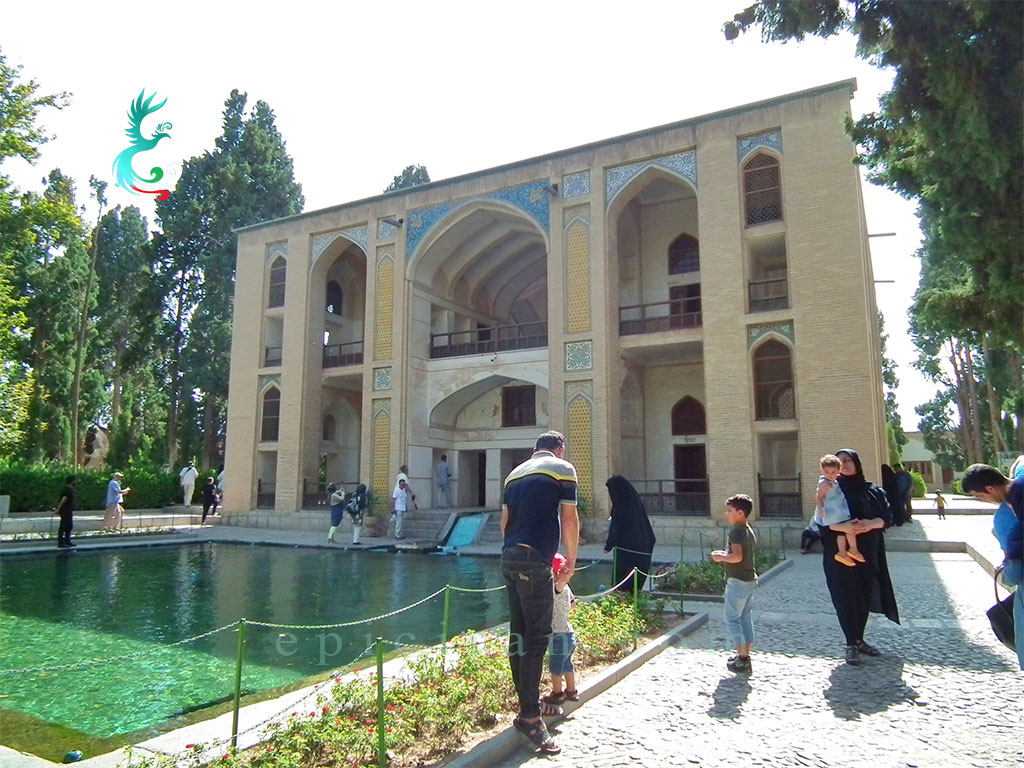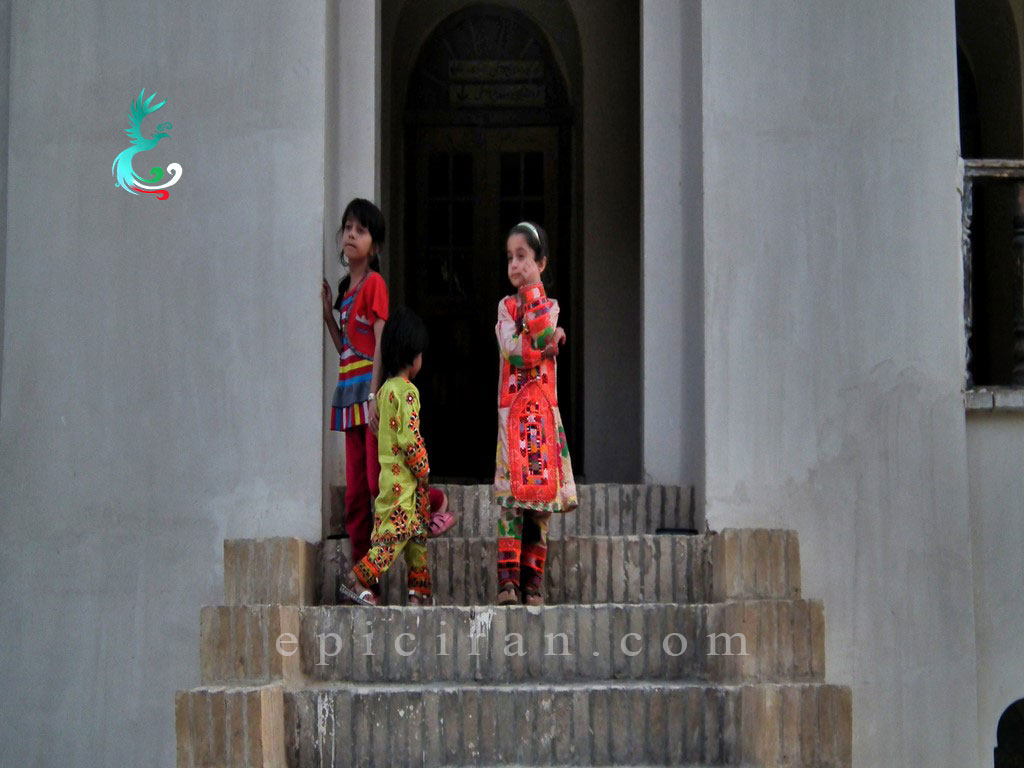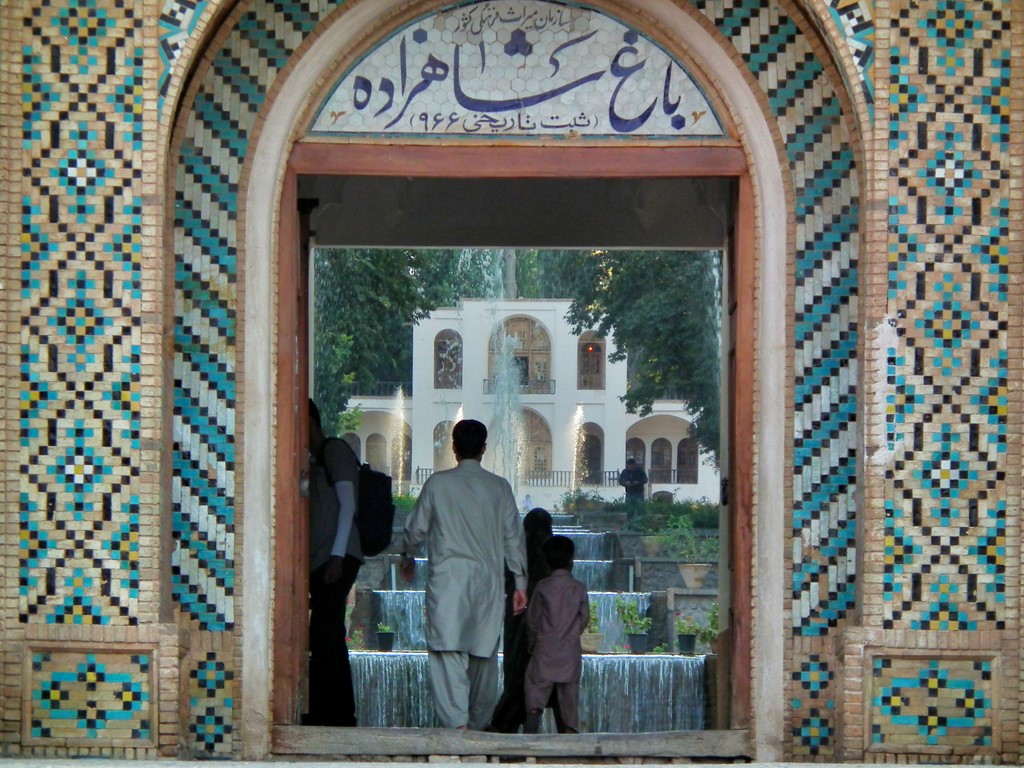Persian Garden: What are the 8 most famous Persian Gardens in Iran?
Iranians have been interested in building gardens and orchards since ancient times. In Greek writings about 3,000 years ago, it was stated that there were Persian garden houses, which are called “Pere Dese” meaning “around the fortress”. The word Paradise means heaven, in Arabic called Ferdows, and in other languages paradise (meaning enclosed and circular garden area) is derived from this word. In Persian gardens, all the religious principles are the same as the architectural style, for example, symmetry, centrality, hierarchy, exploitation of the landscape, etc. This article refers to some important Persian gardens whose names are on the UNESCO World Heritage List, We have introduced these famous Persian Gardens:
Fin Garden in Kashan – The most famous Persian Garden in Kashan
Kashan is a city in the center of the desert between the desert and the mountains, which has been inhabited since the past due to its geographical importance. Fin Garden is located in one of the areas around Kashan called Fin. There were many Persian gardens in this area in the past, and the historical garden of Fin was the most important. The pattern of Fin Garden construction is more influenced by the water path than anything else. The existence of this garden has been attributed to the Buyid period, for which there is no evidence of this period, the time of Shah Abbas Safavid is relevant. This place includes several buildings such as the central pavilion, the main entrance of the building, Sulaimaniyah spring, baths, and service spaces. The garden is surrounded by a wall with four towers in front of the head at the entrance of the main axis and at the end of the axis of the pavilion, which is related to the Safavid era. The Fin garden has two main axes that form the Iranian Chaharbagh plan with a water axis and sub-axes for access and division of different sections.
There is a spring called Sulaimaniyah Spring in the south of Fin Garden, the water of which divides into two branches, the first branch enters the male spring and the second branch enters the female spring, and then flows into several ponds in the garden. The stone circulates a large mill, and after a distance, the water of the two springs, male and female, merges again and reaches the gardens and fields of Fin village. There are two large and small baths in this complex. The small bath, which belongs to the Safavid period, is not very important from the architectural point of view and is historically important because it is the massacre of Amirkabir, the larger Qajar bath is painted with marble columns and ceiling. The garden has a variety of old plants and cypress trees, some of which date back to the time of the old Persian garden that was destroyed.

Chehel Sotoun Garden in Isfahan – Persian Garden which remained from Grand Paradise of Isfahan
Chehel sotoun Garden and Palace located in Isfahan are among the most important buildings of the Safavid period in Iran and the city of Isfahan. The garden is located in the south of Sepah Street in Isfahan with an area of about 6700 square meters and the center of it is the famous Chehel sotoun Palace. It is said that this garden was a corner of the big garden of Isfahan, which has gradually become modern in shape and size. The water supply system of this Persian garden is based on a branch of Zayandeh rud(river) that passes along the main axis of the garden and flows into the large pool in front of the building on the east side of the middle axis and another water feature that is similar to it on the west side of this axis. Connected by two narrow streams, the garden’s vegetation includes native pine, taro, black maple, sycamore, silk, juniper, fig, and acacia trees, and fruit trees. Vegetation covers about 57% of the garden, which controls the intense sunlight and creates shade and air conditioning. The pavilion is located at the end of the main axis of the garden and the main hall on the east side, which has a cool space and shade of this Persian garden. In front of the pavilion is a columned porch supported by 20 wooden pillars.
Eram Garden in Shiraz – Persian Garden that belongs to Seljuk era
Eram Garden is located in Fars province and Shiraz city, which belongs to the Seljuk era. This Persian garden has always been used and restored by various kings and rulers throughout history. In the initial design of this garden, the principles of original Iranian garden architecture have been observed, but some of these elements have disappeared over time. And in the northern and northwestern parts, these elements no longer exist. The main axis of the Eram Garden, part of which has been destroyed today, has four main parts. The different parts of this axis are connected by water that enters the garden from the upper part. Eram Garden was considered a government garden until the end of the Zand Dynasty, but after a while By handing it over to the leaders of the Qashqai tribe, it becomes a “residential-government” garden. Eram Garden was handed over to Shiraz University about 50 years ago, and then it became a teaching place and a botanical garden. The vegetation of the garden is very diverse and many species have been used in this. The main mansion of the Eram Garden was built during the Qajar period during the reign of Nasser al-Din Shah and follows the Zand and Safavid dynasty architectural style. This mansion is located in the middle of the garden and at the end of its main axis.

Shazdeh Garden in Mahan – Jewel of the central desert of Iran
Shazdeh Garden is located 2 km from Mahan city in Kerman province and near the Shah Nematollah Vali Shrine. Made by Abdul Hamid Nasser Al-Dawlah, ruler of Kerman and Baluchistan. This garden, which is located in the center of a dry, waterless and grassy area, shines like a jewel in this area. The secret of the miraculous construction of this Persian garden in the area is that the fertile soil, the necessary light, gentle winds, and access to water (Tigran aqueduct) have been provided. The water of Shazdeh garden enters from the upper part, the water entering between the axes and plots flows like a waterfall, at the end of the two main axes, in front of the main building, and at the entrance of two pools, a wide water level is designed. The sound and jump of water and their fountains add to the pleasantness of the garden.
The buildings in the Shazdeh garden include the main pavilion at the end of the garden, the building at the entrance of the garden, which is located linearly in the entrance space and has two floors. The garden was damaged due to a long period of desolation as well as the earthquake, which has been renovated and is now a beautiful promenade for leisure.

Dowlatabad Garden in Yazd – One of the most original designs of the Persian garden
Dowlat Abad Garden is located in Yazd, which dates back to the Zand era and has an area of about 6.4 hectares. This Persian garden is also called a thousand trees due to the presence of many trees that prevented the view from the outside into the garden. The design of the Dowlatabad garden is one of the most original designs of the Persian garden. It consists of two rectangular parts and its main axis passes through it as an axis of symmetry. One of the rectangles is the “inner garden” and the other is the outer garden called heaven. The inner garden was actually the private residence of the family and is a part that is known today as Dowlat Abad Garden.
The components of the garden consist of the Garden entrance mansion (paradise), porch mansion (windbreak mansion), mirror hall, northern entrance mansion, side hall, Tehran mansion, water storage, large stables, and service spaces. This Persian garden is a kind of “government-residential” garden whose main source of water is the Dowlat Abad aqueduct. The vegetation of the garden is based on geometric order including pine and cypress along the waterfront, and inside the plots, various fruit trees such as figs, berries, citrus fruits, pomegranates, and grapes were planted. They planted alfalfa and spruce and filled the space between the trees with red flowers, which were used for rose picking. Today, only a few mulberry trees in the garden and only cypress and pine trees in the direction of the main axis are left.

Akbarieh Garden in Birjand – The most important historical Persian Garden in the eastern part of Iran
Akbarieh Garden is the most important historical garden in the eastern part of Iran, located in the capital of southern Khorasan province, Birjand. Part of the garden belongs to the Zand period, but the main part belongs to the Qajar period. The garden was built using “agricultural-residential” by Heshmat al-Mulk, who was the ruler of Nasser al-Din Shah in Sistan, which was later used by the government and the court. The construction of this Persian garden is appropriate to the climate and geography of the region. In such a way that the selection of plant species, the flexibility of geometric planting design appropriate to slope conditions and soil texture, selection of suitable geographical direction to produce shade, optimal water consumption and prevent water loss, planting fruit trees next to fruitless trees, axis. The main and central part of the garden is the visual unity of the mansion, which has been taken into consideration in the construction of the Akbarieh garden. The design of this Persian garden is Chaharbagh’s architecture and the Akbarieh mansion in the southern part has two floors with three separate parts, each of which was formed in a period of time and the western part is the oldest part of the building. The central part was built by Ibrahim Khan Shaukat al-Mulk during the Qajar period and is the most significant part of the mansion, and finally, the western part was added to the building during the Pahlavi period.
Abbas Abad Garden in Behshahr – The most beautiful Persian Garden on the beach of the Caspian Sea
Abbas Abad Garden, which was one of the recreational gardens of Shah Abbas Safavid, is one of the most beautiful beaches of the Caspian Sea, which is located in the forest slope of Behshahr, 9 km from this city. The special features of this Persian garden are the construction of a completely natural forest background, the wide presence of water, and the two-way view due to the slope of the garden, which has made it unique. The existence of abundant water resources in the area and the location of the garden has made this complex into an island. There was a garden called a quadrangle in the middle of the lake, which could be reached by boat or wooden bridge. All the components of the garden are built on a plate and symmetrically. The water conduction system in Abbas Abad Garden is one of the most important and special cases in which clay pipes are used.
Pahlavanpur Garden in Mehriz – A Persian Garden full of a different kind of trees
Pahlavanpur Garden is located in Yazd province and the city of Mehriz, which has about 5 hectares and dates back to the Qajar period built by a trader named Pahlavanpur. Running water in this garden is supplied from the “Hasanabad” aqueduct, which does not pass directly through any of the gardens in the region except this garden. Pahlavanpur Garden includes buildings such as an entrance building, pavilion building, Zemestankhaneh(winter house), Gelin Tower, carpet weaving and spinning workshop, stables, and storage.
The pavilion building located in the central part of the garden, which has a unique beauty due to the passage of water through it, is built with two and a half floors. The winter part is also related to spending the winter and cold. The vegetation of this garden includes fruit trees such as pomegranate, berry, fig, grape, apple, greengage, peach, almond, apricot, persimmon, pear, red plum, walnut, hawthorn, Mohammadi, and fruitless and ornamental trees such as Purple, boxwood, rose, Amin al-Dawla screw. The use of this garden is “agricultural-residential”.

